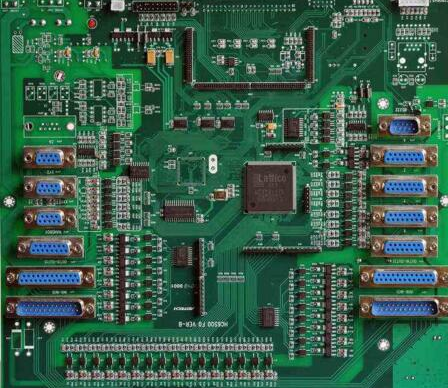The SMT patch needs to go through the processes of screen printing, dispensing, placement, curing, and reflow soldering. Its assembly density is high, and the electronic products using the patch processing technology are small in size and light in weight. SMT will be introduced in detail below.
SMT patch needs to go through processes such as screen printing, dispensing, placement, curing, and reflow soldering. Its assembly density is high, and the electronic products using patch processing technology are small in size and light in weight. The following specifically introduces the "SMT patch process" And process characteristics".

1. SMT patch process
1. Silk screen: Its function is to leak solder paste or patch glue onto the PCB pads to prepare for the soldering of components. The equipment used is a screen printing machine (screen printing machine), located at the forefront of the SMT production line.
2. Dispensing: It is to drip glue onto the fixed position of the PCB board, and its main function is to fix the components on the PCB board. The equipment used is a glue dispenser, located at the forefront of the SMT production line or behind the PCB inspection equipment.
3. Mounting: Its function is to accurately mount the surface mount components to the fixed position of the PCB. The equipment used is a placement machine, located behind the screen printing machine in the SMT production line.
4. Curing: Its function is to melt the patch glue, so that the surface assembly components and the PCB board are firmly bonded together. The equipment used is a curing oven, located behind the placement machine in the SMT production line.
5. Reflow soldering: Its function is to melt the solder paste, so that the surface assembly components and the PCB board are firmly bonded together. The equipment used is a reflow oven, located behind the placement machine in the SMT production line.
6. Cleaning: Its function is to remove the solder residues such as flux that are harmful to the human body on the assembled PCB board. The equipment used is a washing machine, and the location may not be fixed, it may be online or offline.
7. Inspection: Its function is to inspect the welding quality and assembly quality of the assembled PCB board. The equipment used includes magnifying glass, microscope, online tester (ICT), flying probe tester, automatic optical inspection (AOI), X-RAY inspection system, functional tester, etc. The location can be configured in a suitable place on the production line according to the needs of the inspection.
8. Rework: Its function is to rework the PCB boards that have failed to detect faults. The tools used are soldering irons, rework stations, etc. Configured at any position in the production line.
Second, the technological characteristics of smt patch processing
1. PCB electronic products with high assembly density and chip processing technology are small in size and light in weight.
2. High reliability, strong anti-vibration ability, and low defect rate of PCB solder joints.
3. PCB has good high frequency characteristics, reducing electromagnetic and radio frequency interference.
4. It is easy to realize automation and improve production efficiency. Reduce costs, save materials, energy, equipment, manpower, time, etc.